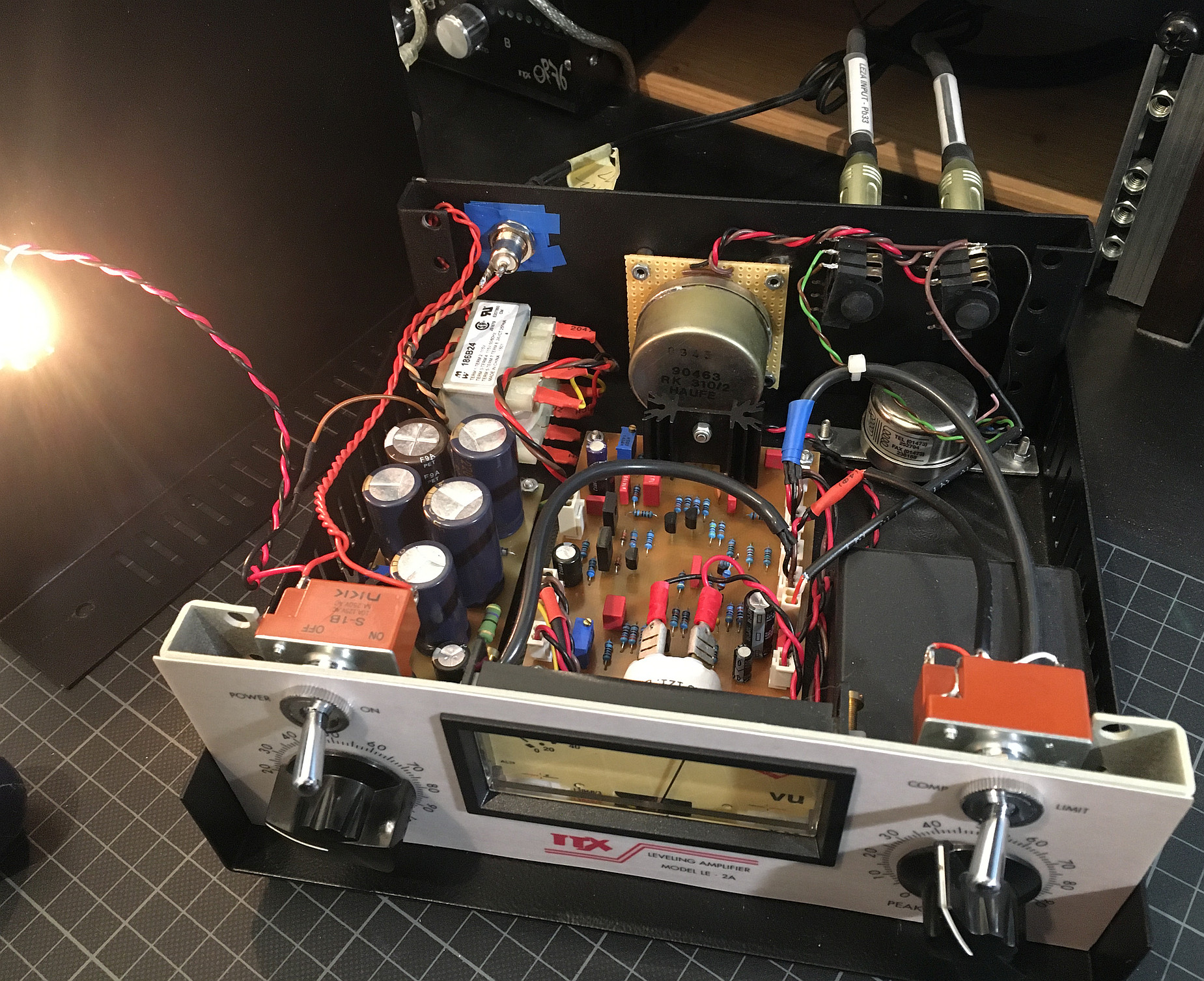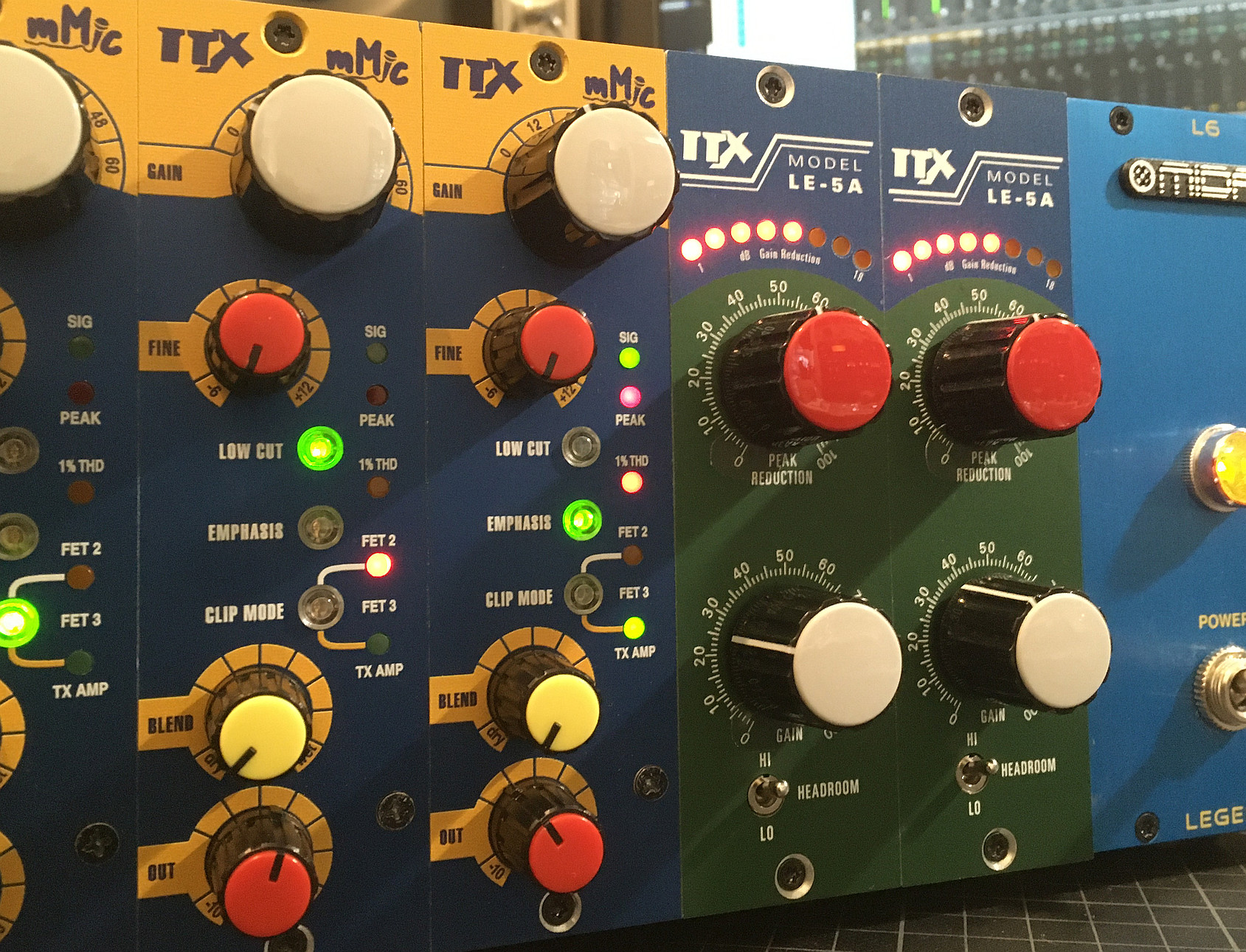pstcho said:for that i see, only the ne5534 or the THAT 1646 could the "noise genrators "
The problem is that in a FET compressor the signal level has to be extremely low (<<100mV) at the gain reduction FET for it to remain in its linear region. Otherwise it would distort heavily.
Your real "noise generator" in this case is the thermal noise added by resistor R10 (10k) and the input pot which in the worst case adds another 2.5k at its -6dB position. Both of these resistances account for about -112dBu of noise which is amplified by ~25dB by the next stage. This stage is a modified mic pre design by our fellow Samuel Groner which is extremely low noise but you still end up with a noise level that's at least 20 times higher. Being swamped by this amount of hiss, the contribution of the following stages to the output noise is virtually negligible.
However, you could try to replace the input opamps U2 and U3 by opamps that have even less noise than the good old NE5532. An LM4562 would be a good candidate - they have gotten quite affordable lately - but I doubt that you would see an improvement of more than a dB or two...
A real 1176 has a 27k resistor in the place of R10 which by itself produces almost 4dB more Johnson noise. Be aware that the sidechain of my OP76 is tuned around the value of R10 to achieve the same compression curves and knees of a real one which means that reducing its value any further is not possible without altering the compression characteristics that you've grown to love











![Soldering Iron Kit, 120W LED Digital Advanced Solder Iron Soldering Gun kit, 110V Welding Tools, Smart Temperature Control [356℉-932℉], Extra 5pcs Tips, Auto Sleep, Temp Calibration, Orange](https://m.media-amazon.com/images/I/51sFKu9SdeL._SL500_.jpg)














